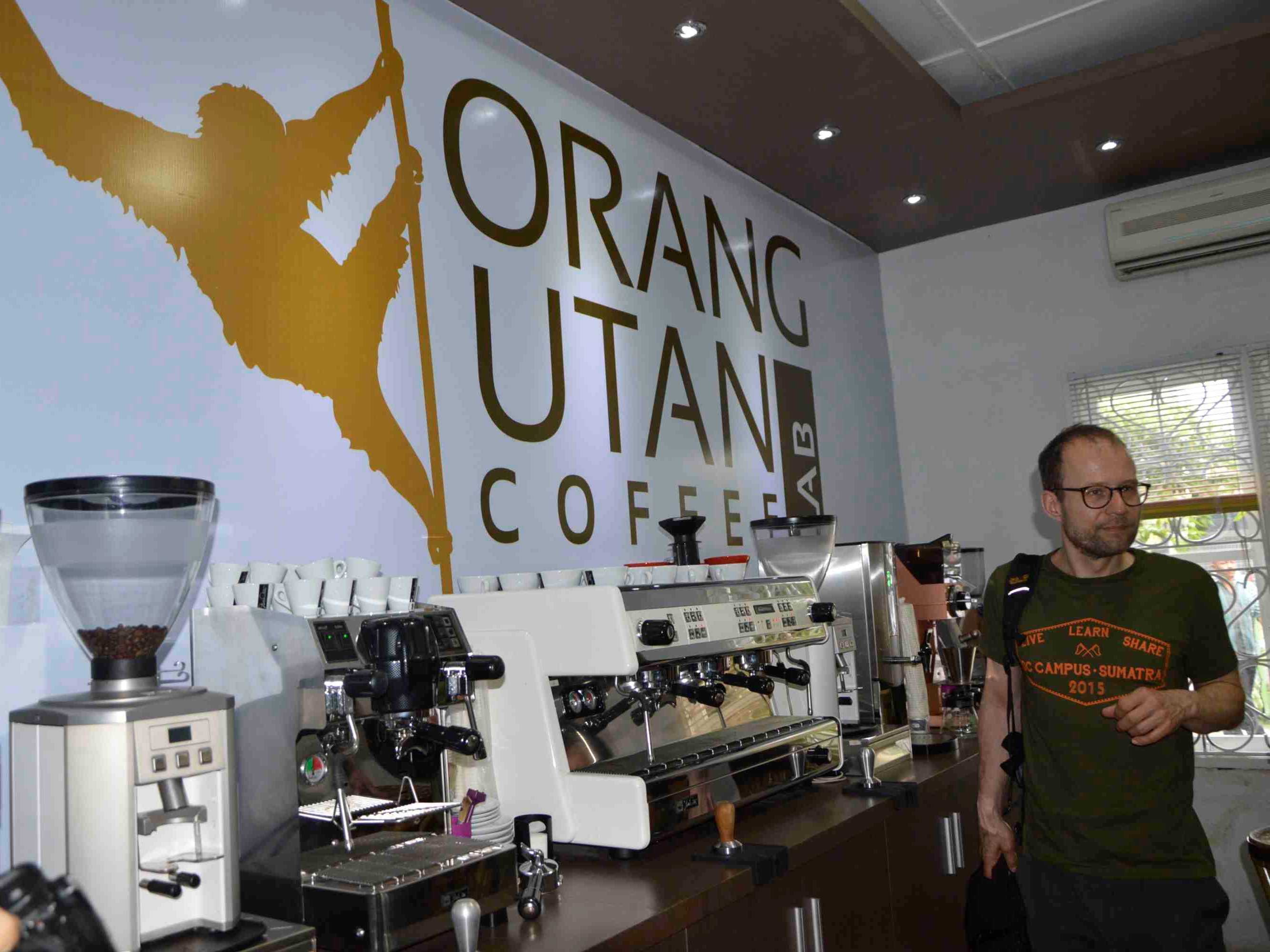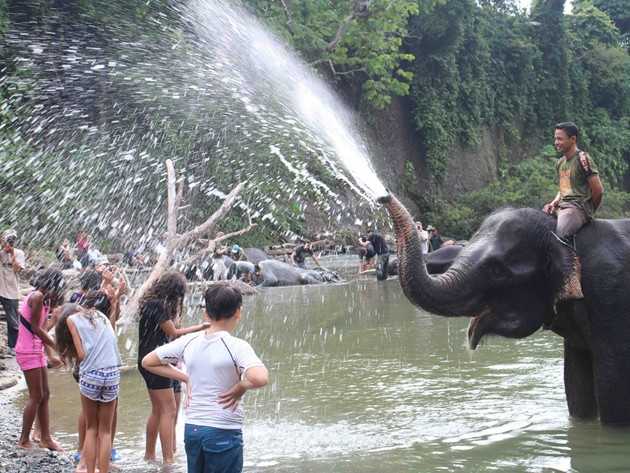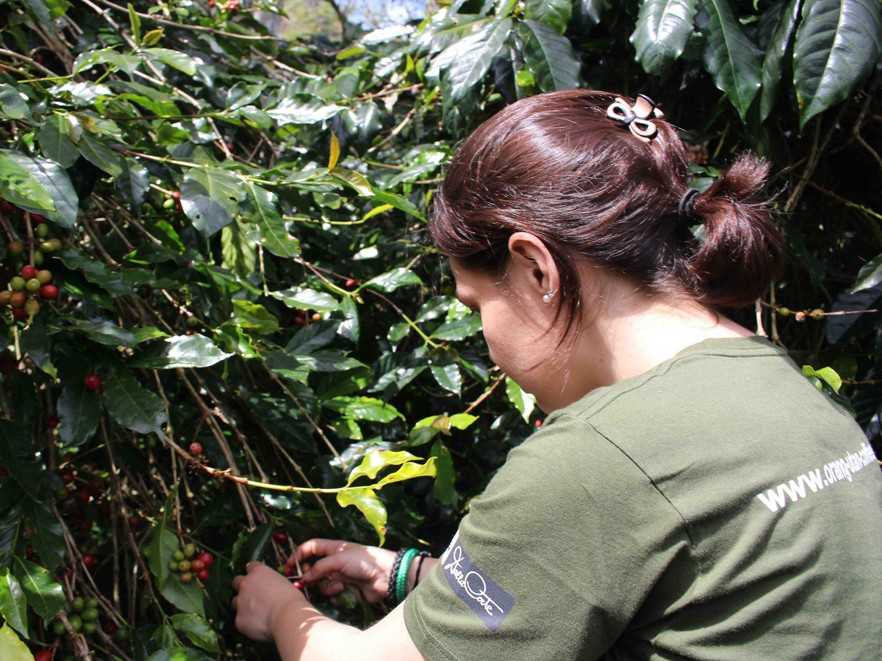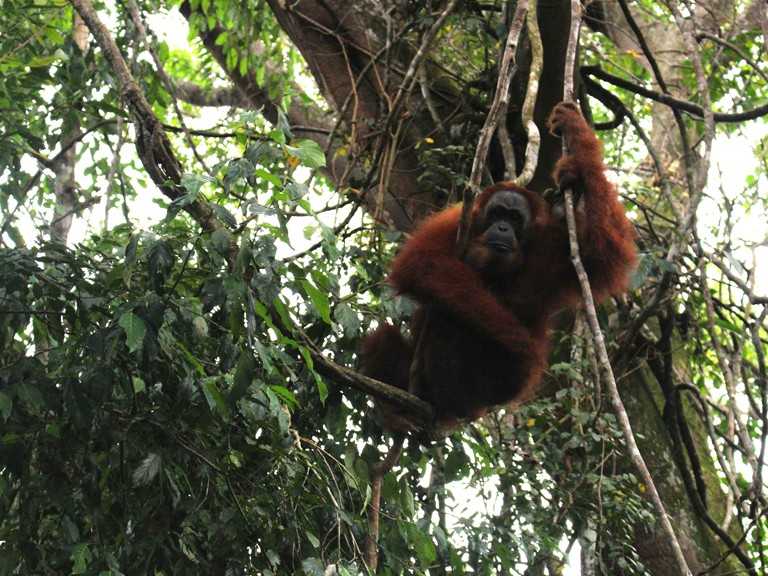The 2015 edition of the dc campus, the annual event organised by Dalla Corte and destined to baristas and coffee professionals from all over the world, proved special.
It certainly maintained its live/learn/share motto and trained competitors for the future world finals, but also gave its participants the chance to get in a wider, deeper contact with the world of coffee.
In fact, this year’s edition did not take place in via Candiani, Milan, but literally at the other part of the world – in Medan, Indonesia, capital of the North Sumatra province. On April 23 and 24, over fifty participants met at the Danau Toba Hotel, in the heart of the city.
Here, the Swiss organization PanEco started the Orang Utan Coffee Project to preserve land and animals from increasing deforestation caused by oil palm cultivations and urban settlements. In fact, sustainable, organic Arabica coffee growing has been recognised as a valid means for maintaining the primary forest and therefore the tropical flora/fauna.
Dalla Corte joined the project by creating the Orang Utan Coffee Lab, a training and support centre for the farmers involved in organic coffee farming. Moreover, here is where the “dc campus goes to Sumatra” started, carefully supervised by Regina Frey, co-founder of the project, and Diana Kosmanto, tireless guide and organizer.

Rescued Orang-Utans and Cupping Sessions
On Saturday, 25 April we leave for the Orang-utan Medical Quarantine, a few km away from Medan. The Centre hosts several orang-utans rescued from fires and deforestation, which deprive animals of their natural habitat, preventing them from living on trees and thus forcing them to live on the ground, where they are more exposed to predators.
We are asked to put masks on our faces and then start the tour of the Centre, where orang-utans live in wide cages. Here, they are healed and reintroduced to sociality and to life on trees. Most of them will be released into their natural habitat once their energies and skills are back.
The unluckiest – those who have suffered more severe traumas – are given personal support by tutors who guide them in improving their movements and give them the warmth they were deprived of too early and for too long. With this touching experience in our minds, we leave for the Orang Utan Coffee Lab, a training and support centre for organic coffee farmers that Dalla Corte equipped with a three-group Evolution machine, a mini espresso machine and two dc one grinders.
Besides, Dalla Corte has been providing coffee producers with advice and training by means of its dc coffee pros – it is an extremely pragmatic way to help farmers grow and cope with the international market (since the high-quality Sumatran coffee can certainly access such market).
Moreover, here is where many cupping sessions take place, during which xperts can taste the fresh crop (coffee picked between March and April) of many coffee varieties and origins, and spot the differences in final taste caused by different growing conditions, such as altitude or place of cultivation (next to the forest or among fruit trees, for example).
A Fascinating Forest
We leave for Butik Lawang, in the heart of the Island. During our three-hour journey, we are struck by the immense oil palm stretches replacing the tropical forest, where the natural habitat of many animal species has been destroyed and biodiversity considerably reduced. The soil beneath the palms is particularly dry and is not suitable for any other cultivation.
The landscape changes dramatically as soon as we get to the Ecolodge in Bukit Lawang – it is an explosion of plants and flowers, colours and sounds. There are many birds, insects and other presences, such as the monkeys that make the branches swing wildly when moving from one tree to another.
Later, we even see a crocodile crossing the street! It is a luxuriant land, rich in water, fauna and flora… a unique place indeed.
Respect for the environment, waste reduction and recycling are the main topics here – even the lamps are made with plastic bottles! In the afternoon, we attend the first workshop, which covers three big topics: brewing techniques, latte art and coffee in good spirits; the first two are especially successful. At night, we enjoy some fresh air and the sound of a guitar at the riverbanks.
On the next day, we meet the forest inhabitants. We enter the forest in small groups and follow expert guides, who make us notice every single detail we pass by: rubber dripping from cut trees, cocoas trees with their ripening fruits, lianas helping monkeys in their movements, termites nests that are bears’ favourite food. Finally, something moves among the branches.
We all look up and barely see the reddish shape of an orang-utan. It is an explosion of photo-shoots and amazement. An orang-utan mum and her baby pass by and get very close for a moment. Monkeys – more cheeky and fearless – get closer and become ideal photo-shooting subjects.
We have learnt how to recognize the animals’ movements, so we walk through the forest and keep spotting them with wonder and enthusiasm. As we go back, we all think we would love to make such a magic tour again and again! After a well-deserved rest, we attend a workshop focusing on the espresso, V60 and other brewing methods, such as Ibrik. We listen, participate and try, keeping in mind the well-known motto “live/learn/share”.

Brother Elephants
Tuesday, 28 April starts with a relaxing morning. We have lunch with the usual courses based on white rice, vegetables, chicken, eggs, sauces and fruit, then leave for Tangkahan. Again, the trip is characterised by the sad landscape of the palm trees; we also travel through an area that has recently been burned to make room for monocultures and see trucks carrying palm fruits to the processing plant. We sigh with relief when the monotony of palm trees gives way to the richness of shapes and colours of the forest, criss-crossed by an infinite network of rivers.
We get to a river. Here, a barge carries us halfway across it, and then we have to get off and walk to reach the opposite bank, with the fresh water up to our knees. This new Jungle Lodge is certainly wilder than the previous one.
Rooms are basic and the net protecting our sleep from insects and other animals is accurately positioned over our beds. Wednesday starts with a tasty, unusual breakfast: a nutritious banana crepe. We reach the river, cross it and head to the elephants’ area. Just like orang-utans’, elephants’ lives are put at risk by deforestation as well, so now they are living very close to the people who rescued them. Elephants prove very collaborative: the morning starts with a good bath, followed by currying – we are given a brush and invited to join this morning habit.
Finally, it is breakfast time and we feed these huge animals with fruit and bamboo. We take many pictures, then some lucky people have the chance of going on a brief tour on the elephants’ backs. After lunch, we gather our baggage (the capacious, numbered black sacks the organisation provided us with at our departure start to show their resistance and usefulness) and go back to Medan.
Coffee Roads
As we have already experienced, a 100 km journey in Sumatra can take many hours, due to the traffic of the big cities or to the bad road conditions. Today, April 30, our 500 km journey takes very long. We get to the airport and fly to Lhokseunawe. Here, we divide in groups of 4-5 people and travel in jeeps to get to Takengon, in the northern part of the Island.
We arrive in late afternoon and find some wooden houses on fire. Nothing will be preserved: the following day, we decide to collect some money to contribute to their reconstruction. The building hosting us, Hotel Mahara, has a peculiar architecture: it has a rectangular base and three floors overlooking an uncovered pool on the ground.
At night, the wide breakfast room on the top floor turns into a dc bar, where coffee in good spirits champions prepare tasty drinks, showing their skills. On Saturday 1 May, a quick journey takes us to a hulling station. Here, the incoming coffee has already been pulped and washed, briefly fermented and dried (reaching a moisture of 36%). It is laid in the sun until its moisture has reached the 13%, then its parchment and silver skin are removed. Later, it is graded by means of gravity separators and bagged (other inspections will follow).
During our visit, some farmers arrive at the station on sidecars carrying many coffee bags. But it is only in WinBersih – a place at 1300 metres asl – that coffee becomes the actual Orang Utan Coffee. Here, we find the first “Orang Utan farmers” (certified in 2014), who follow a detailed protocol that specifies the necessary precautions in organic coffee farming and requires farmers to respect the forest, which proves indispensable for coffee growing and for preserving this unique environment.
An average of 5 people (a family) per hectare work here; the care of plants is constant and requires vertical branches to be cut off, so that no nourishment is taken away from the other branches: this gives the coffee plant an unusual “downward” shape.
Plants live for approximately 25 years and the younger ones are bedded out next to the older ones, so that when the older reach the end of their life cycles, the younger will be there, ready to replace them. Ripe cherries are picked manually, one by one: a red bracelet on the pickers’ wrist helps them spot the right ripening degree.
Cherries are then carried to the washing station, where they are checked: if they were picked accurately, they can become Orang Utan coffee. Coffee is then pulped, washed and fermented for 10 hours in bags with a small amount of water. We get some bags and start picking the cherries ourselves (how slow we are, if compared to expert pickers!) and follow each processing stage.

At lunch, we eat the first pasta dish of our tour: what a relief, after all the rice we have eaten up to now! During the break, a group of children catches our attention and we start playing with them. They smile and look at us with their bright eyes, just like all the children and adults, men and women we have met in these days.
Once we are back in Takengon, we meet for a cupping session focussing on five coffees from different origins: Orang Utan coffee stands out for its body and pleasant acidity, which is tempered by a final sweet note. The next day starts with a long journey on the uneven roads that cross the forest. We head to Umami Isaq, at 1300 metres asl, in the eastern part of the Island, close to the sea.
The plantation is small – it is slightly over one hectare wide – and very isolated; here the crop is about to finish. We join the picking and the following coffee processing. When we go back to our cars, we are struck by the bright green landscape – it is crossed by many runlets and divided into small, geometrical patches where rice is grown.
We stop in Takengon again to set the foundation stone of a future lab destined to coffee studying and processing and of an attached guest-room building.
An Amazing Adventure
We wake up in Takengon on May 3 with this awareness: our tour among the wonders of the Orang Utan Project is ending.
We travel to Medan, where we will part tomorrow. It is not easy to say goodbye after such an intense experience and a pleasant, productive coexistence. With the sacks on our backs, we leave with the awareness that we have lived a unique experience and the hope we will have the chance to meet again in a new dc campus in Sumatra.


















